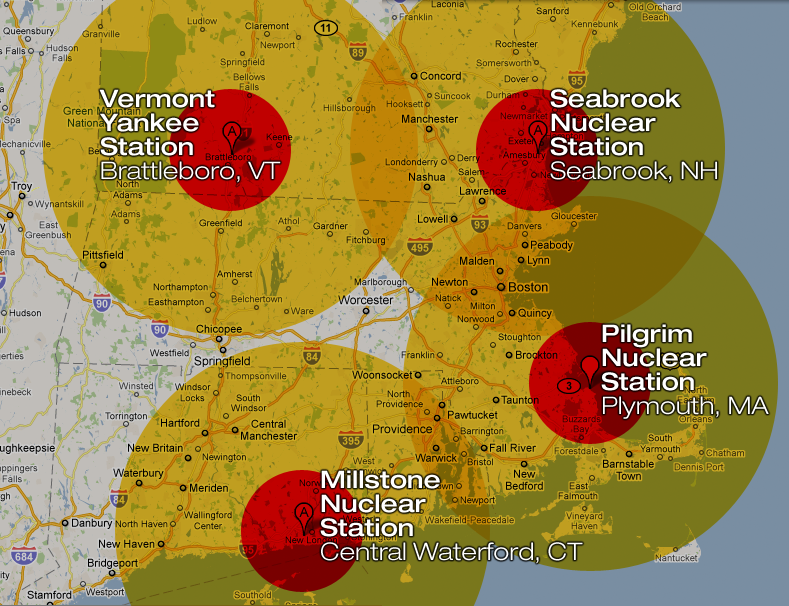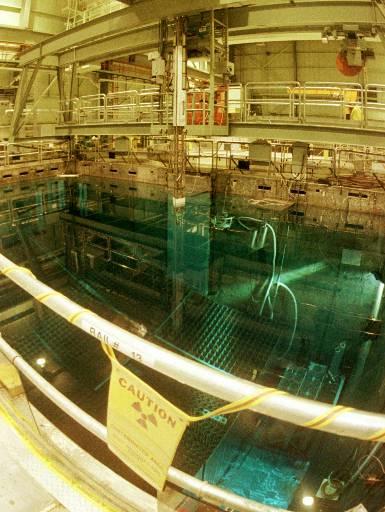Posted on April 18th, 2011 at 3:03 pm by Steve

Imagine a “station blackout” occurs at the Pilgrim Nuclear Generation Station in Plymouth, MA. Within days, a hydrogen explosion shatters the secondary containment building, possibly breaching primary containment as well. The government orders a mandatory evacuation for areas within 20 km of the plant, but the BBC World Service is saying that the British government has advised their citizens not to travel within 50 miles of Plymouth.
This catastrophe at Plymouth (or Seabrook, or Vermont Yankee, or Millstone in Connecticut) hasn’t happened…yet. But the notion that “it can’t happen here” has taken quite a beating over the last month. If and when a disaster like this strikes, we’ll have hours to evacuate. Think for a moment what it would take to evacuate just the inner “exclusion zone” around one of these reactors. Where are we going to put all the people from Brockton, Plymouth, Taunton, Fall River, Buzzards Bay, Sandwich…? And what about the more than a million people that live within 50 miles? Remember that, even now, the US government is advising Americans not to travel within 50 miles of Fukushima, a month after the crisis began. How can we avoid travel to the entire Boston metro area?
Of course, Pilgrim only has one reactor, where Fukushima Daiichi has six. On the other hand, Pilgrim has more than TWO MILLION POUNDS of radioactive spent fuel assemblies stored on site. A loss of coolant water in the tightly-packed spent fuel pool at Plymouth – which has far less containment, and far more fuel, than the reactor core – could quickly lead to a fire and a massive excursion of radioactive isotopes of cesium, strontium, iodine, and others. An explosion could spread deadly plutonium and uranium particles for miles (as happened at Fukushima). In other words, even with fewer reactors, a station blackout at Plymouth could have worse radiological consequences than the ongoing disaster in Japan.

The spent fuel pool at Vermont Yankee
The reactor at Plymouth is a General Electric Mark I Boiling Water Reactor, the same design and vintage of the “troubled” reactors in Japan. Of course, America’s Nuclear Industry and Regulators (is there a difference?) are quick to point out that American reactors have strict safety standards and have been upgraded and so on. Ask them about the spent fuel pools. Ask them how long they can run the pumps to maintain sufficient cooling in the event of a station blackout (whatever the cause). Ask them the consequences of allowing the operator to store 2,918 spent fuel assemblies in a pool that was designed and originally licensed to hold just 880 assemblies.
Of course, the spokesman for Vermont Yankee is quick to assure us, “We believe pools are perfectly safe. It was designed to be safe and there are redundant systems so there is never a loss of coolant.” Indeed. For some reason, those fools in Japan neglected to design their pools to be safe, and that’s why they suffered a complete loss of coolant and melting of the fuel rods in the spent fuel pool. Silly Japanese!